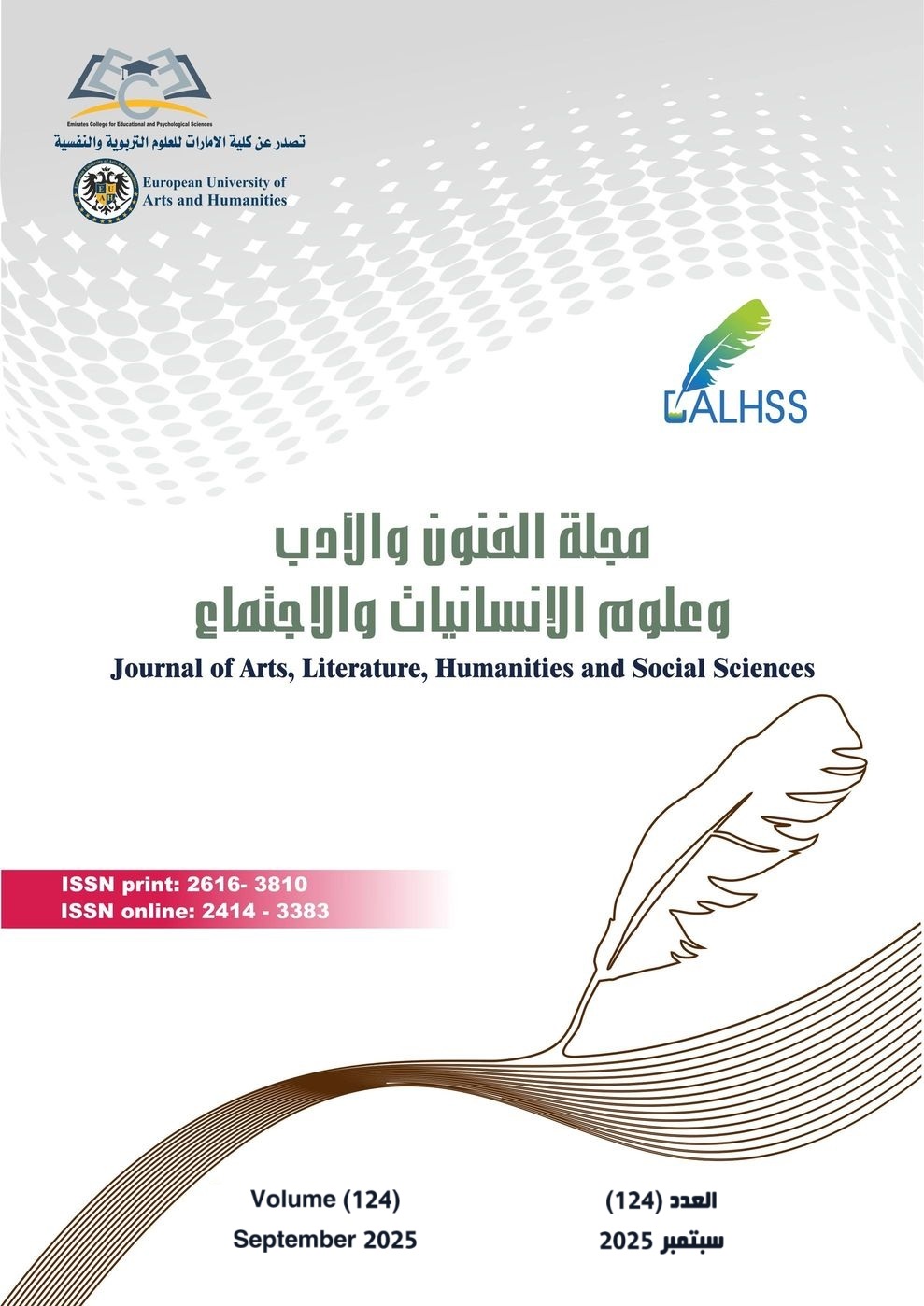أثر استراتيجيات المعالجة الإعلامية في المنصات الرقمية على إدراك المتلقي للمحتوى الإخباري
(شبكة قدس الإخبارية نموذجا)
الملخص
تهدف هذه الدراسة إلى الكشف عن أثر استراتيجيات المعالجة الإعلامية في المنصات الرقمية على إدراك المتلقي للمحتوى الإخباري، من خلال دراسة حالة شبكة قدس الإخبارية. وقد ركزت الدراسة على ثلاثة أبعاد رئيسية تمثل أبرز الاستراتيجيات الإعلامية، وهي: أسلوب معالجة المعلومات وصياغتها، وتكثيف النشر عبر قنوات متعددة، إضافة إلى اعتماد أنماط التأطير الإعلامي والإطار السردي في بناء الخبر. اعتمدت الدراسة المنهج الوصفي التحليلي باعتباره الأنسب لتوصيف الظاهرة محل البحث وتحليلها ميدانيًا. شمل مجتمع الدراسة الأفراد الفلسطينيين الذين تتراوح أعمارهم بين 18 و45 عامًا ممن يتابعون بانتظام محتوى المنصات الرقمية، حيث جرى اختيار عينة عشوائية طبقية بلغ قوامها (400) مشارك من مختلف محافظات الضفة الغربية. تم جمع البيانات باستخدام استبانة مبنية على الأطر النظرية والدراسات السابقة ذات الصلة. أظهرت النتائج وجود أثر قوي ومعنوي لاستراتيجيات المعالجة الإعلامية على إدراك المتلقي الفلسطيني، إذ برزت معالجة المعلومات وصياغتها كأكثر الاستراتيجيات تأثيرًا، تلاها النشر الكثيف والمتعدد القنوات، ثم التأطير الإعلامي والإطار السردي. كما تبين أن هذه الاستراتيجيات مجتمعة تؤثر في الكيفية التي يفهم بها المتلقي الأحداث ويعيد تفسيرها. وأوصت الدراسة بضرورة تنفيذ برامج للتربية الإعلامية، وتقديم تدريبات تخصصية لتعزيز وعي المتلقين بكيفية عمل المعالجات الإعلامية في البيئة الرقمية، إلى جانب تطوير سياسات إعلامية تقلل من هيمنة المحتوى غير الموثوق، وتشجع المؤسسات الإعلامية على التنويع في الأساليب السردية بما يضمن رفع مستوى الوعي النقدي لدى الجمهور.
المراجع
2. زين الدين، وجدي. (2023). الإعلام الرقمي والإعلام التقليدي: دراسة تناقش حديث الاختلاف والاندثار. مجلة جامعة مصر للدراسات الإنسانية، 3(عدد خاص)، 167–194.
3. المهدي، المهدي سليمان، و البشير، رشا أحمد. (2025). الإعلام الرقمي بين التضليل الدعائي والمسؤولية الاجتماعية: التحديات التي يواجهها المجتمع في ظل انتشار المعلومات المضللة عبر وسائل الإعلام الرقمي وتأثيراتها على المسؤولية الاجتماعية. مجلة القلزم العلمية، 42، 61-104.
4. عداي، أحمد جواد، محمد، أحمد عزيز، و شاش، سجاد رعد. (2024). التضليل الإعلامي في مواقع التواصل الاجتماعي. مجلة الدراسات المستدامة، 6(ملحق)، 3139–3156.
5. فرج، مصعب فريد، و عطا الله، نبيل. (2023). البرمجيات الرقمية وقدرتها على صنع التضليل الإعلامي. مجلة الجامعة العراقية، 62(3)، 147-155.
6. البرصان، الهام أحمد سليم. (2022). إدراك طلبة الإعلام في الجامعات الأردنية لطرق واستراتيجيات المعالجة الإعلامية المستخدمة في الإعلام الرقمي: دراسة مسحية. المجلة العربية للإعلام والاتصال، 32، 235-277.
7. سهمي، سعيد. (2020). الإعلام الرقمي والإشاعة: كيف تسهم الشائعات في التضليل وصناعة الشخصية الأسطورية. مجلة الجوبة، 66، 128-132.
8. ملح، حبيب خلف. (2021). تقنية التزييف العميق وأثرها في تهديد مصداقية الإعلام الإلكتروني: دراسة وصفية. مجلة جامعة تكريت للعلوم الإنسانية، 28(4)، 354-376.
9. آدم، آدم أحمد، و محمد، سارة إبراهيم. (2024). تأثير التضليل الإعلامي عبر الإعلام الرقمي على المشاركة السياسية للشباب الجامعي: دراسة ميدانية على عينة من طلاب الجامعات في السودان. مجلة آداب، 10، 11-26.
10. سلمان، نور. (2016). ما بعد الحقيقة: سياسات المتعمد في عصر الإعلام الرقمي. مجلة اتجاهات الأحداث، 19، 42-45.
11. 7amleh – The Arab Center for Social Media Advancement. (2020). Fake News in Palestine: Exploratory Research into the Content, Channels and Responses.
12. Mohydin, R. (2023). Israel’s War on Gaza and the Weaponisation of Social Media. TRT World Research Centre.
13. Institute for Strategic Dialogue (ISD). (2025). Conflict Amplified: Disinformation and Hate in the Israel-Hamas War.
14. Buller, D. B., & Burgoon, J. K. (1996). Interpersonal deception theory. Communication Theory, 6(3), 203–242.
15. Entman, R. M. (1993). Framing: Toward clarification of a fractured paradigm. Journal of Communication, 43(4), 51–58.
16. Granovetter, M. S. (1973). The strength of weak ties. American Journal of Sociology, 78(6), 1360–1380.
17. Lewandowsky, S., Ecker, U. K. H., Seifert, C. M., Schwarz, N., & Cook, J. (2012). Misinformation and its correction: Continued influence and successful debiasing. Psychological Science in the Public Interest, 13(3), 106–131.
18. McCornack, S. A. (1992). Information manipulation theory. Communication Monographs, 59(1), 1–16.
19. McGuire, W. J. (1964). Inducing resistance to persuasion: Some contemporary approaches. In L. Berkowitz (Ed.), Advances in experimental social psychology (Vol. 1, pp. 191–229). Academic Press.
20. Paul, C., & Matthews, M. (2016). The Russian “firehose of falsehood” propaganda model. RAND Corporation.
الحقوق الفكرية (c) 2025 أ.د. حسن حبيبي , ثائر عصام نصّار

هذا العمل مرخص حسب الرخصة Creative Commons Attribution-ShareAlike 4.0 International License.



